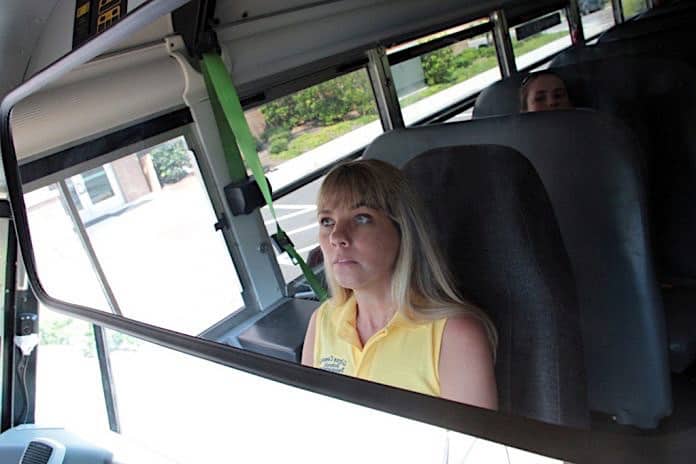In an interview two days after the June 10 shooting at Reynolds High School that killed a student and injured a teacher, Reynolds (Ore.) School District Superintendent Linda Florence discussed the importance of training all personnel to effectively respond to school violence.
“I think the whole school was locked down within 15 seconds,” Florence told a local news outlet. “That shows that there was a lot of training, kids listened to the staff, the staff took the lead … And I think that’s what saved lives.”
According to police, freshman Jared Michael Padgett, 15, shot and killed freshman Emilio Hoffman, 14, and injured teacher Todd Rispler before turning the assault rifle on himself. A Gresham police officer shot Padgett once before the teen shot himself.
Padgett arrived on the school bus Tuesday, carrying a guitar case and a large duffel bag, Troutdale Police Chief Scott Anderson said at a press conference. One of those held an AR-15 rifle that the teen brought from home, the sheriff added.
When the teen got off the bus, he entered school through the boys’ locker room, housed in the building that holds the gym, where he encountered Hoffman, said Anderson.Florence said the high school campus has a number of security cameras covering “major routes,” as well as other security measures. A member of a five-person student-management security team monitors the cameras in real time, she explained. But the school cannot put cameras in locker rooms, which allowed Padgett to remain undetected once on campus.
While Florence noted she cannot imagine anything the school district could have done differently that would have prevented the tragic shooting, she emphasized that district officials will now consider a variety of options to “become even safer.”
“We’re reviewing everything,” she added. “You have to in a situation like this.”
Industry Trainers Weigh In
Mike Dorn, executive director of Safe Havens International Inc., said the latest incident in Oregon reinforces lessons from past attacks such as one that took place in Forsyth County, Ga. in the early 1990s. In that case, a student rode the bus to school with more than 90 pounds of weapons and took students hostage at his high school.
“Both incidents demonstrate the need for (bus) drivers to be trained in pattern matching and recognition,” Dorn noted. “This concept involves training people to spot the subtle patterns of human behavior that help us to detect potentially dangerous people. This training is very powerful for school bus drivers because it can help them detect a person who is at risk to harm themselves or other people.”
With Padgett, one key question is whether he typically carried a large duffel bag and guitar case on the bus. In addition, a classmate who witnessed the shooting said Padgett looked very angry before he opened fire.
“Though it is difficult to provide much viable feedback at this point because we lack reliable information so soon after an incident, we do know from experience and research that this type of violator will act differently just prior to an attack and that these subtle behaviors are usually observable when people are properly trained,” continued Dorn.
Bret Brooks is chief operating officer and senior instructor at Gray Ram Tactical, LLC, which offers various types of safety training, including active-shooter drills, led by S.W.A.T. operators, military personnel and law enforcement experts.
“We do a lot of training programs for school bus drivers. Some stuff we teach is how this very scenario (a school shooting) can be prevented through the use of the bus driver. If the bus driver has been trained and knows what to look for, what specific details, then they can identify the active shooter before he reaches the school,” he told STN.
Brooks is coordinating the mock scenario with the S.W.A.T. Team at the STN EXPO on Sunday, July 27, which is designed to put attendees in the middle of a “real-world” emergency situation. Additionally, a pre-conference EXPO workshop on July 26, “School Bus Driver Prevention and Detection of Violence,” will teach participants about weapon, drug and gang recognition; responding to violence while driving; identifying differences between violence and bad student behavior; and understanding verbal and nonverbal indicators of aggression.
Jeff May, founder and CEO of Apex SCF, also offers safety training for school bus drivers on violence mitigation and prevention led by former law enforcement and security professionals.
Kelly Knapp, director of transportation at Storey County (Nev.) School District, told STN the Apex training empowered her and her transportation staff, as well as counterparts from nearby districts. They practiced active shooter drills, using a classroom, and learned how to physically restrain an active shooter or intruder aboard a school bus.
Knapp noted they were also trained on signs and signals to watch for among students and staff who may be planning an attack.
“They gave us things to look for like heavier backpacks or extra bags being brought on the bus. We know our kids and families. We are in a great position to recognize if something is not normal, if something doesn’t look right,” she said. “Now we’re looking to see if students are carrying anything unusual. We’re more aware of signs to watch for.”
Check out STN’s July magazine article on how effective bus driver training prepares them for the unexpected.


















